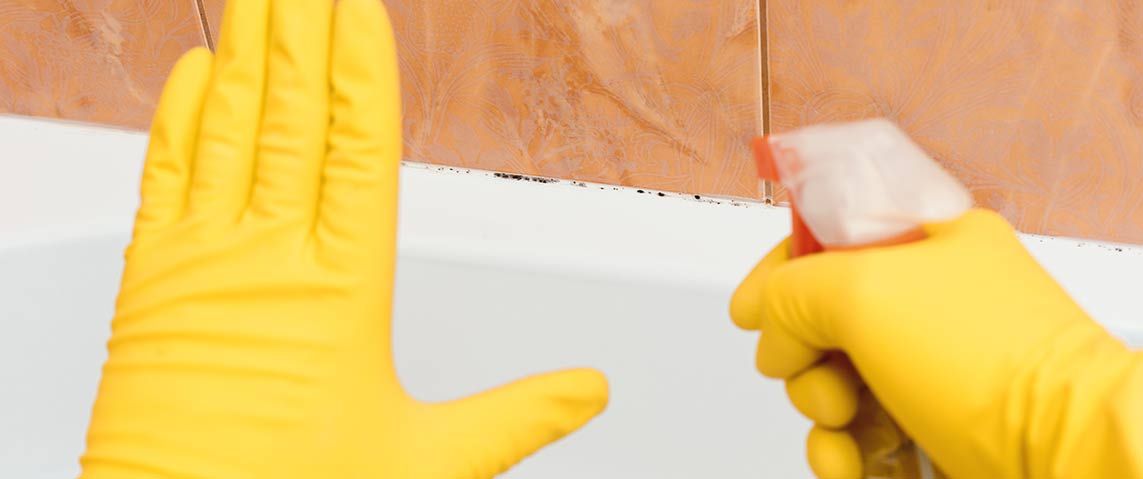How to get rid of mould? The best way possible

In this post, we'll cover
In addition, it prefers to grow on cardboard, wood, ceiling tiles, and wooden goods, paints, wallpaper, insulation, drywall, carpet, fabric, and upholstery. Without any doubt, mould would put you in a stressful situation, and you might continue to consider and hunt for ideas on how to get rid of mould. Let's glimpse what mould is and how to deal with it as effectively as possible.
Mould is a fungus that feeds on dead plant and animal waste. This includes construction components like wood, gypsum plasterboard, furniture, or under the rugs. It also thrives in damp, poorly ventilated areas and reproduces through spores. They may begin to develop and spread indoors if they land in damp areas. There's no feasible method to get rid of all indoor moulds; the only way to keep it away is to control the source of moisture or humidity and it's critical to have sufficient ventilation in your home.
How to get rid of Health problems due to Moulds?
Other than the lack of airflow in your bathroom, other reasons may aid the growth of mould including, for example, leaking pipes or dampness that hasn't been cleared after a shower. Furthermore, mould in wet homes can cause symptoms of asthma, sneezing, coughing, wheezing, respiratory problems, and allergies. It will harm your immune function due to moisture absorption.
How do you get mould?
Moisture and Inadequate ventilation are significant reasons for mould flourishing in dark, warm environments. That's why it's ubiquitous in high-humidity areas like kitchens or bathrooms. However, other regions of the house can be impacted by mould if they have humidity issues.
Among the most common causes of moisture in buildings is inadequate airflow. When humidity cannot escape, it condenses in the air and is deposited as condensation on hard surfaces. Activities such as cooking, bathing, or putting out damp laundry can add moisture to a room. However, the mould begins to grow if the condensation is not dried within 24 hours.
How would I detect if my bathroom has mould?
Mould can be detected in your bathroom in several ways. Remember that mould grows from inside, so the problem is likely already severe and requires immediate attention if you can see it.
Even if your bathroom appears to be entirely dry and clean, a prevalent damp odour is a warning that mould is growing somewhere. If your wall or tiles appear brown and muddy, with a moist and slimy appearance, black mould is likely to be forming. Crumbling plaster, off-coloured walls, blistered paint, or fractured tiles are examples of damaged walls.
How to Get Rid of Mould in Drains and on Walls?
Suppose you think about how to get rid of mould quickly and cost-effectively. Here is the step-by-step guidance and items to get the task done as soon as possible.
● A bowl or a basin and bleach or a mix of vinegar and water
● Soda (baking) and wrap in cling wrap
● Gloves made of rubber to protect your hands
● An old toothbrush and possibly a paintbrush
● Use white vinegar to remove mould spores and reduce the spread of the disease.
● Scrub off black mould spots with a soft scrubby brush or toothbrush.
● Fill a regular spray bottle halfway with cleansers you've at home.
● Bleach: After eliminating black mould, bleach brightens and disinfects surfaces.
Combine the bleach or vinegar solution with the baking soda to produce a paste and you can use the toothbrush to reach any hard-to-reach areas. Cover the paste with cling wrap and set it aside to dry. If you're going to use bleach, ensure the room is well ventilated and you are wearing rubber gloves. A sprayer is the best tool to apply the solution. Fill the bottle halfway with the solution and apply it to the mould on the wall. Allow the solution to dry for around 15 minutes on the walls. Then scrape the damaged areas with a scrubbing brush to eliminate the mould. It would help if you had a gleaming drain and spotless transparent walls when you're scrubbing the solution and mould away.
Clean the Tiles
Tiling and other delicate surfaces should be cleaned regularly. Spray a cleaning fluid onto the afflicted area on a smooth toilet surface, such as tiles or a basin. A noticeable coating should be present, but do not over-saturate the affected region. Clean the mould away with a wet sponge or cloth, and you might need more than one towel or sponge if you're cleaning a large area. In addition, use a cleaning brush if the mould isn’t easy to take off.
Re-grout if necessary. However, once mould has penetrated the grout, it is harder to remove altogether. Working with mould is complicated and messy, especially in poorly ventilated spaces like shower cubicles and restrooms. Even if the mould removal process is done well, most homeowners are unlikely to be able to identify the root of the mould formation and efficiently deal with it. If you tried your best, but still have mould in your house, you should get experts to help because your health matters.
Get a Home Emergency Coverto cover your emergencies related to boilers, central heating, locked doors, missing keys, pest control.
Discover the advantages and considerations of each option to help you choose the most suitable boiler system. Visit our comprehensive guide comparing electric and gas boilers to learn more.
Explore the essential guidelines and regulations governing boiler flues to maintain a secure and efficient heating setup. Visit our detailed page on boiler flue regulations to understand the requirements and keep your home safe and compliant.

 Home Emergency
Home Emergency 
 Home Appliances
Home Appliances 
 Landlord Home Emergency
Landlord Home Emergency 





 Motor Breakdown Cover
Motor Breakdown Cover 


 Infotainment
Infotainment 

 Home Emergency Insurance
Home Emergency Insurance Home Appliance Insurance
Home Appliance Insurance Landlord Home Emergency
Landlord Home Emergency TV Brands
TV Brands